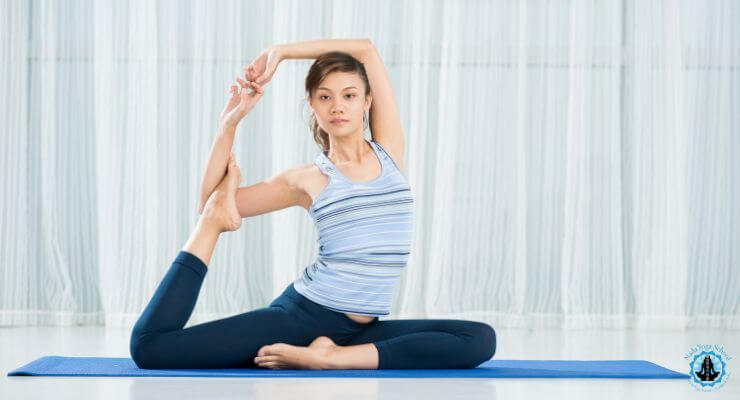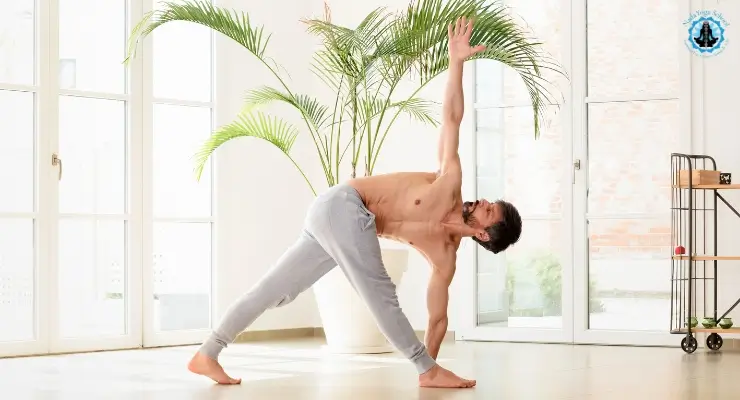Ardha Padmasana, commonly known as the Half Lotus Pose, is a seated asana that serves as a gentler alternative to the full Lotus Pose (Padmasana), making it accessible for those with less flexibility in their hips and knees. This pose is widely used in meditation and pranayama practices due to its balance of comfort and stability.
How to Do Ardha Padmasana
- Starting Position: Begin by sitting on the floor with your legs extended in front of you, spine erect, and arms resting by your sides.
- Folding the Legs: Bend your right knee and gently place your right foot on the left thigh, ensuring that the sole faces upward and the heel is close to the abdomen. The right knee should ideally rest on the floor.
- Positioning the Other Leg: The left leg remains on the floor, with the left foot relaxed in front of the pelvis.
- Spinal Alignment and Hand Position: Keep the spine straight, shoulders relaxed, and hands on the knees in a mudra of choice. The chin mudra, with the thumb and index finger touching, is a common choice, symbolizing the connection of individual and universal consciousness.
- Focus and Breathing: Soften your gaze or close your eyes, focusing inward. Maintain a steady, deep breathing pattern, concentrating on each inhalation and exhalation to cultivate a meditative state.
Benefits of Ardha Padmasana
- Improves Flexibility: This pose gently stretches the hips, thighs, and knees, improving flexibility over time.
- Enhances Circulation: By facilitating a stable and upright posture, it enhances blood circulation, particularly in the pelvis and spine.
- Stimulates Abdominal Organs: The positioning of the legs and the upright torso stimulates the abdominal organs, aiding in digestion and the functioning of the reproductive system.
- Promotes Mental Calmness: Ideal for meditation, Ardha Padmasana helps in calming the mind, reducing stress, and enhancing focus and concentration.
- Prepares for Advanced Poses: It serves as a preparatory pose for the full Lotus Pose, gradually increasing hip and knee flexibility.
Contraindications
- Knee and Ankle Injuries: Individuals with existing knee or ankle injuries should avoid this pose or approach it with caution, using supports such as cushions under the knee.
- Hip Disorders: Those with severe hip disorders should consult a healthcare provider before attempting this pose.
- Sciatica: People suffering from sciatica may find this pose aggravating and should opt for less demanding positions.
Modifications and Tips
- Use of Props: A folded blanket or cushion under the buttocks can elevate the hips, making the pose more accessible and comfortable for those with tight hips or knees.
- Gradual Progression: Start with a few minutes and gradually increase the duration as flexibility and comfort improve.
- Alternate Legs: To maintain balance in the body, practice alternating the top leg when practicing the pose regularly.
Conclusion
Ardha Padmasana offers a balanced blend of physical and mental benefits, making it a valuable addition to any yoga practice. Its accessibility and adaptability make it suitable for yogis at different levels of their practice, serving as a bridge to more advanced seated asanas. By incorporating Ardha Padmasana into your routine, you can enjoy increased flexibility, enhanced mental clarity, and a deeper sense of inner peace.





